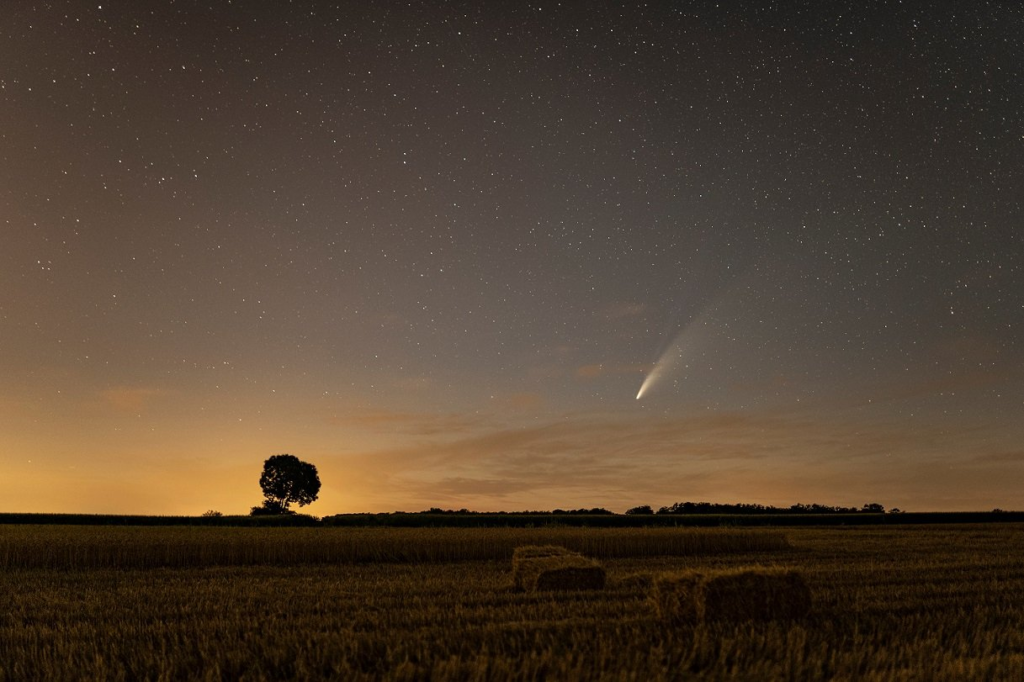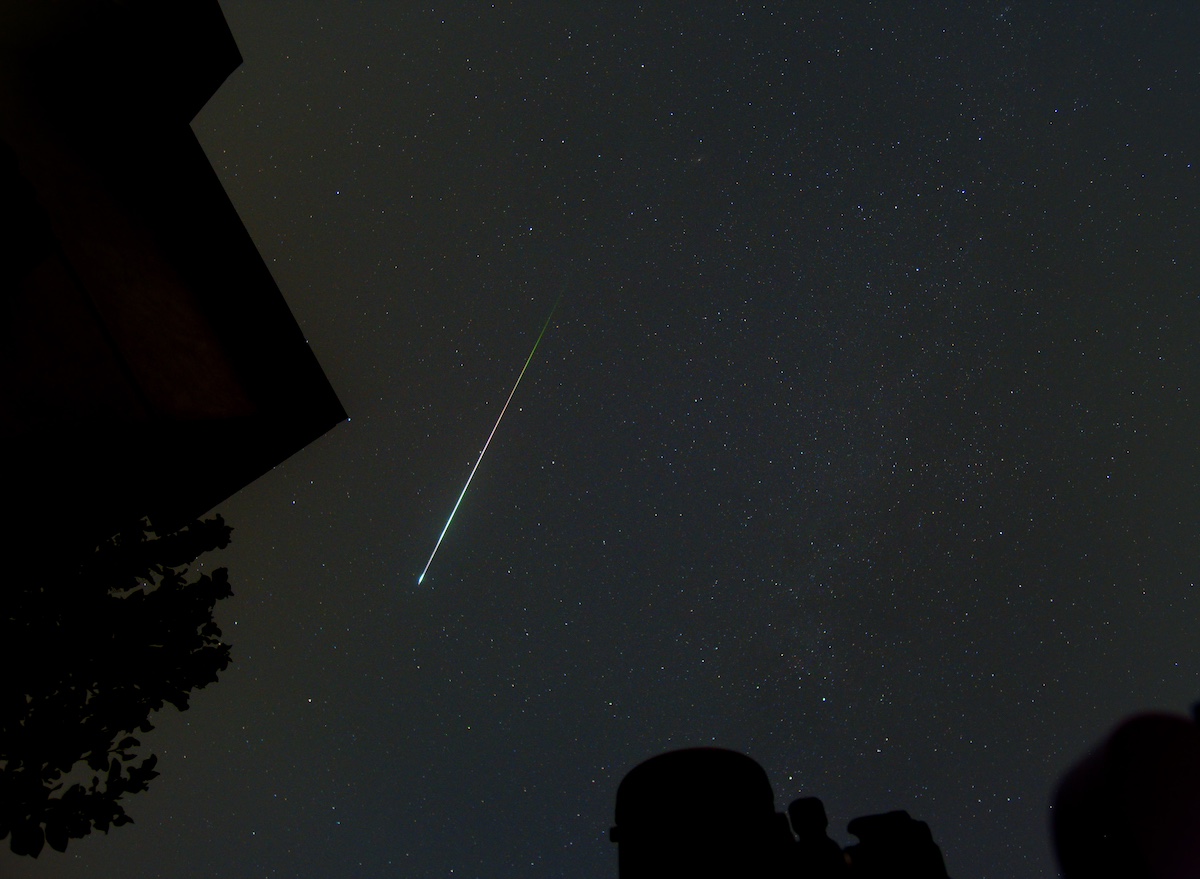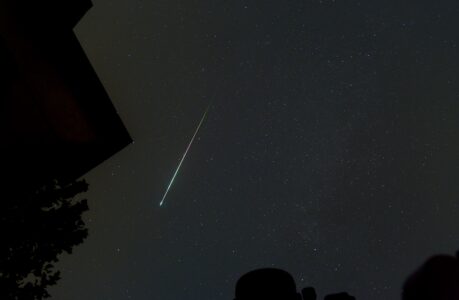Introduction
The night sky, with its twinkling stars and celestial wonders, has always held a special place in the human imagination. Among the most captivating phenomena that grace our night skies are meteors, meteoroids, and meteorites. These terms are often used interchangeably, but they refer to distinct stages in the life cycle of cosmic objects. In this comprehensive guide, we will embark on a journey into the world of meteors, meteoroids, and meteorites, unraveling their differences and exploring the fascinating realm of celestial objects.
The Cosmic Intrigues Above
Before delving into the details, let’s take a moment to appreciate the awe-inspiring beauty of meteors and meteor showers that have captured human imaginations throughout history. The night sky serves as a canvas for these fleeting, luminous streaks, and they never fail to leave us spellbound.

Meteoroids: The Silent Nomads of Space
Our exploration into the world of meteors begins with the smallest and most enigmatic component – the meteoroid. Meteoroids are cosmic wanderers that roam through the vast expanse of space. They come in various sizes, ranging from tiny grains of sand to massive boulders several meters across. Meteoroids typically originate from asteroids, comets, or other celestial bodies.
Characteristics of Meteoroids
Meteoroids possess several distinctive characteristics, making each one a unique entity:
- Size: Meteoroids can vary greatly in size, from minuscule particles to substantial objects measuring several meters in diameter.
- Composition: They can be composed of different materials, including rock, metal, or a combination of both.
- Origin: Meteoroids often break away from asteroids, comets, or even celestial bodies like the Moon and Mars.
- Speed: These cosmic travelers hurtle through space at astonishing velocities, ranging from approximately 11 kilometers per second (25,000 miles per hour) to even higher speeds.
The Fascinating Journey Through Space
Meteoroids embark on incredible journeys through the cosmos. When they break free from their parent bodies, they enter a state of free orbit around the Sun. As they traverse the depths of space, their paths may intersect with Earth’s orbit, setting the stage for the next phase in their existence.
Meteors: Celestial Fireworks
As meteoroids venture closer to Earth, they undergo a stunning transformation, becoming meteors. The brilliant streaks of light that we observe in the night sky are meteors, commonly referred to as “shooting stars.” This luminous display occurs when meteoroids collide with the Earth’s atmosphere, initiating rapid heating and combustion.
Key Features of Meteors
Meteors captivate us for various reasons:
- Brightness: They can be incredibly bright, often outshining the most luminous stars in the night sky.
- Speed: Meteors travel at astonishing speeds, leaving a fiery trail in their wake as they hurtle through the atmosphere.
- Variety: Meteors come in various colors, with green and red being the most common, a result of ionization of atmospheric gases.
- Duration: The lifespan of a meteor can range from a fraction of a second to several seconds, but their impact on observers can last a lifetime.

Meteor Showers: Nature’s Grand Spectacles
Meteor showers are among the most anticipated celestial events, where a higher-than-usual number of meteors streak across the night sky. These spectacular displays occur at specific times each year and are the result of Earth passing through the debris left behind by comets. Some renowned meteor showers include the Perseids, Geminids, and Leonids.
Meteors are transient, lasting only as long as their journey through Earth’s atmosphere. Once their fiery descent concludes, they either disintegrate entirely or, in some fortunate cases, survive to become meteorites.
Common Meteor Shows: Where and When to See Them
Introduction
Stargazers and astronomy enthusiasts eagerly anticipate meteor showers, nature’s dazzling light shows. These celestial events occur at specific times each year, offering breathtaking displays of meteors streaking across the night sky. In this guide, we’ll explore some of the most common meteor showers, providing details on where and when to witness these spectacular cosmic phenomena.
The Perseids
When: Mid-July to late August
Peak Activity: Typically around August 11-13
Best Viewing Location: Northern Hemisphere
The Perseids are one of the most famous meteor showers, known for their high frequency of meteors and often stunning brightness. These meteors are associated with the debris left behind by the Comet Swift-Tuttle. The Northern Hemisphere, especially locations with minimal light pollution, offers the best viewing experience. Find a dark spot, lie back, and enjoy the show.
The Geminids
When: Mid-December
Peak Activity: Typically around December 13-14
Best Viewing Location: Global
The Geminids are unique among meteor showers as they originate from an asteroid, 3200 Phaethon, rather than a comet. They are known for their bright and colorful meteors, making them a favorite among observers. The Geminids are visible from both hemispheres, and their peak often coincides with favorable weather conditions in many regions, making them accessible to a wide audience.
The Leonids
When: Mid-November
Peak Activity: Typically around November 17-18
Best Viewing Location: Global
The Leonids are associated with Comet 55P/Tempel-Tuttle and are known for their periodic meteor storms, where hundreds or even thousands of meteors can be seen per hour. While the intensity of these storms varies, the Leonids remain a captivating meteor shower. They are visible from both hemispheres and can provide a thrilling experience for skywatchers.
The Quadrantids
When: Early January
Peak Activity: Typically around January 3-4
Best Viewing Location: Northern Hemisphere
The Quadrantids are known for their brief and intense meteor display. They are linked to the asteroid 2003 EH1 and often produce bright meteors with long-lasting trails. The Northern Hemisphere offers the best viewing opportunities for the Quadrantids, and they are a great way to kick off the new year with celestial beauty.
The Taurids
When: Late October to early December
Peak Activity: Varies; often several minor peaks
Best Viewing Location: Global
The Taurid meteor shower is unique in that it spans a more extended period, with multiple minor peaks. It is associated with Comet 2P/Encke and is known for producing fireballs—exceptionally bright meteors. While not as intense as some other showers, the Taurids provide a long and continuous display, making them accessible to viewers around the world.
Meteorites: Cosmic Survivors
Meteorites are the tangible remnants of meteoroids that have successfully navigated the intense heat and pressure of their atmospheric entry, reaching Earth’s surface intact. These cosmic survivors offer scientists a treasure trove of information about the composition and history of our solar system.
Types of Meteorites
Meteorites come in three primary classifications:
- Stony Meteorites: Comprising primarily silicate minerals, these meteorites are the most common and account for approximately 95% of all meteorite falls. They provide insights into the building blocks of planets.
- Iron Meteorites: Composed mainly of iron and nickel, these meteorites are heavy and often easily recognizable due to their metallic appearance. Iron meteorites give us clues about the core composition of celestial bodies.
- Stony-Iron Meteorites: A relatively rare type, these meteorites contain a unique blend of silicate minerals and metal, offering a glimpse into the complex processes that occurred in the early solar system.
Scientific Significance of Meteorites
Meteorites hold immense scientific significance:
- Origin Insights: They provide crucial clues about the formation and evolution of our solar system, including the processes that led to the creation of planets like Earth.
- Cosmic Material: Meteorites contain materials that are not commonly found on Earth, such as extraterrestrial isotopes, which can reveal the age and origin of our solar system.
- Dating the Solar System: Scientists use meteorites to determine the age of our solar system, helping us understand its history and development.
Conclusion
In conclusion, gaining a deeper understanding of the differences between meteoroids, meteors, and meteorites enriches our appreciation of these cosmic wonders. Meteoroids embark on silent journeys through the universe, transforming into luminous meteors as they encounter Earth’s atmosphere. While most meteors burn up, a select few survive to become meteorites, offering invaluable insights into the mysteries of our solar system.
So, the next time you gaze at a shooting star or are fortunate enough to witness a meteor shower, remember the incredible journey that these celestial objects undertake. From the depths of space to the Earth’s surface, their story is as captivating as the night sky itself.
For further exploration of astronomical wonders and in-depth information on meteors, meteoroids, and meteorites, you can visit the following resources:
Happy stargazing, and may your nights be filled with celestial marvels!

